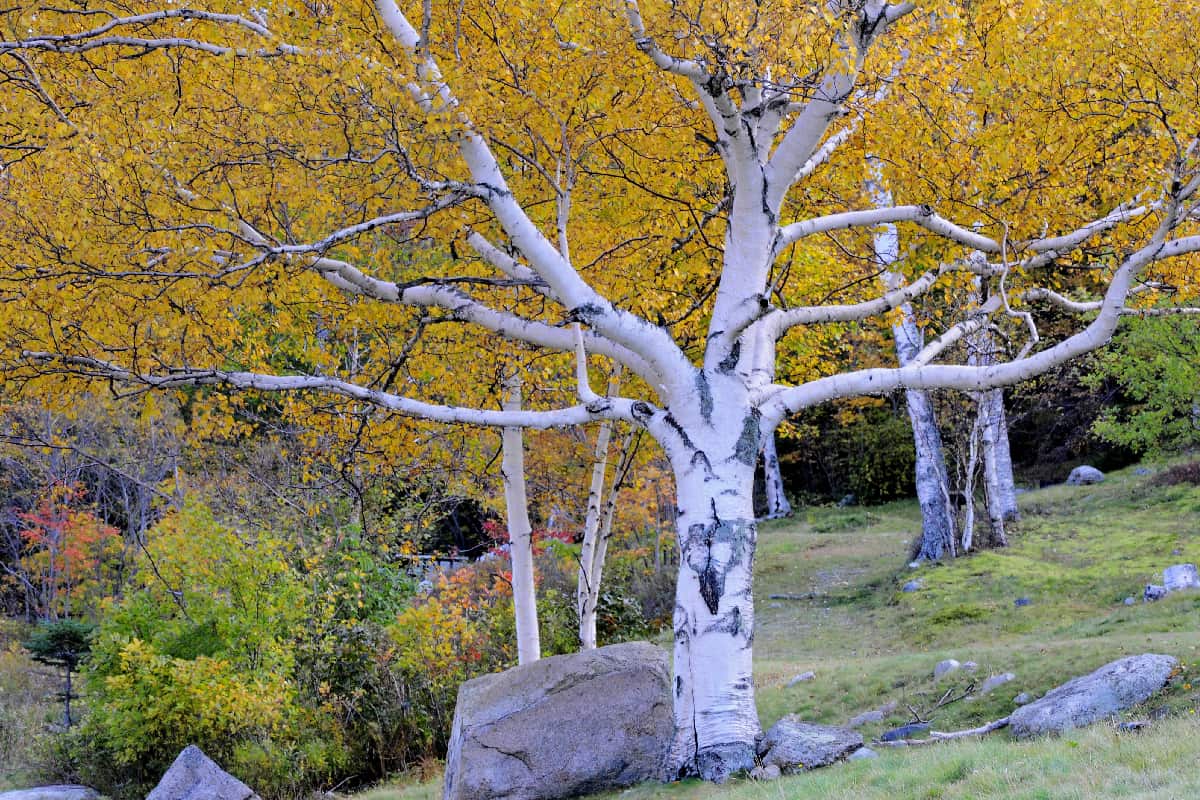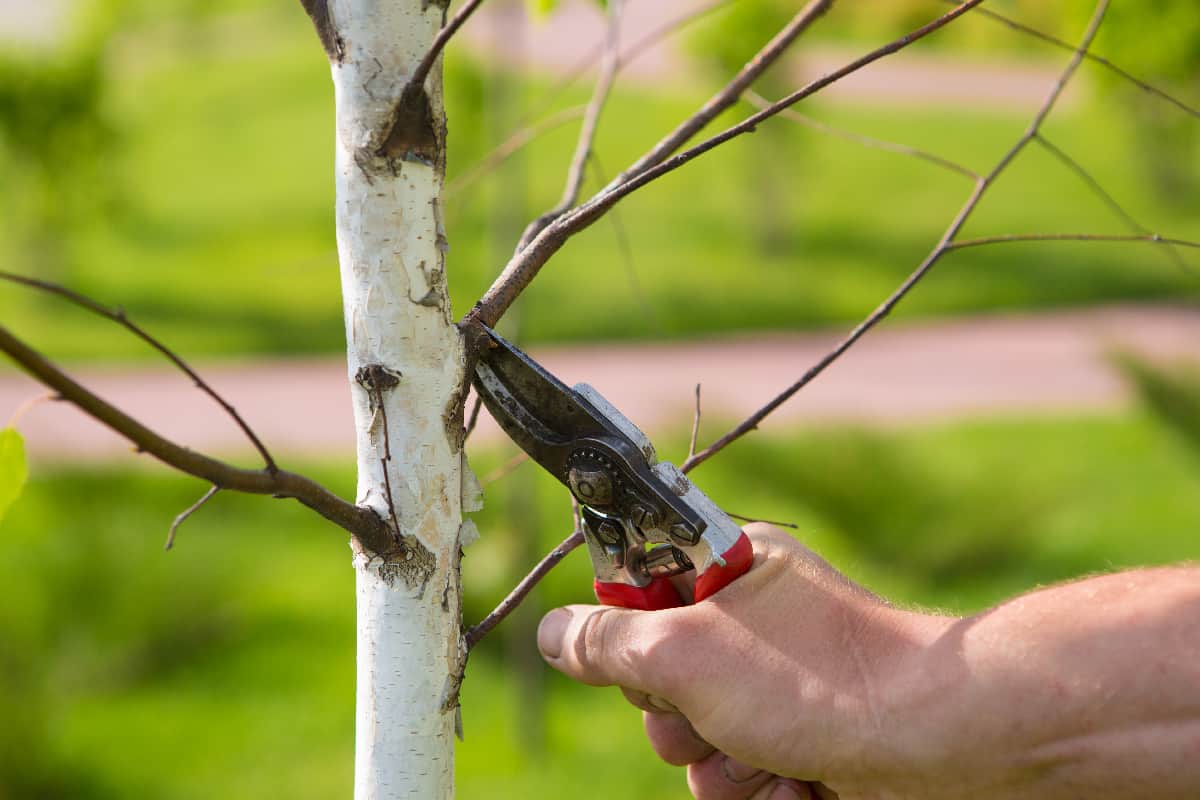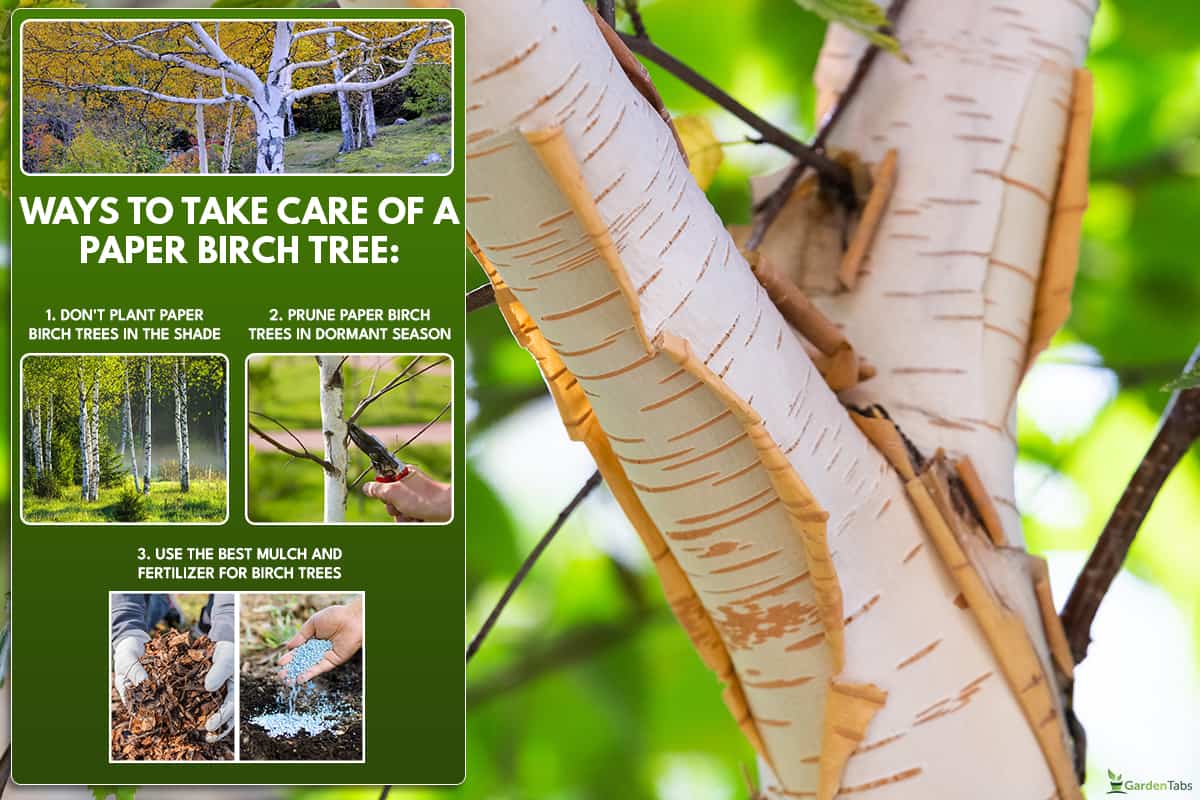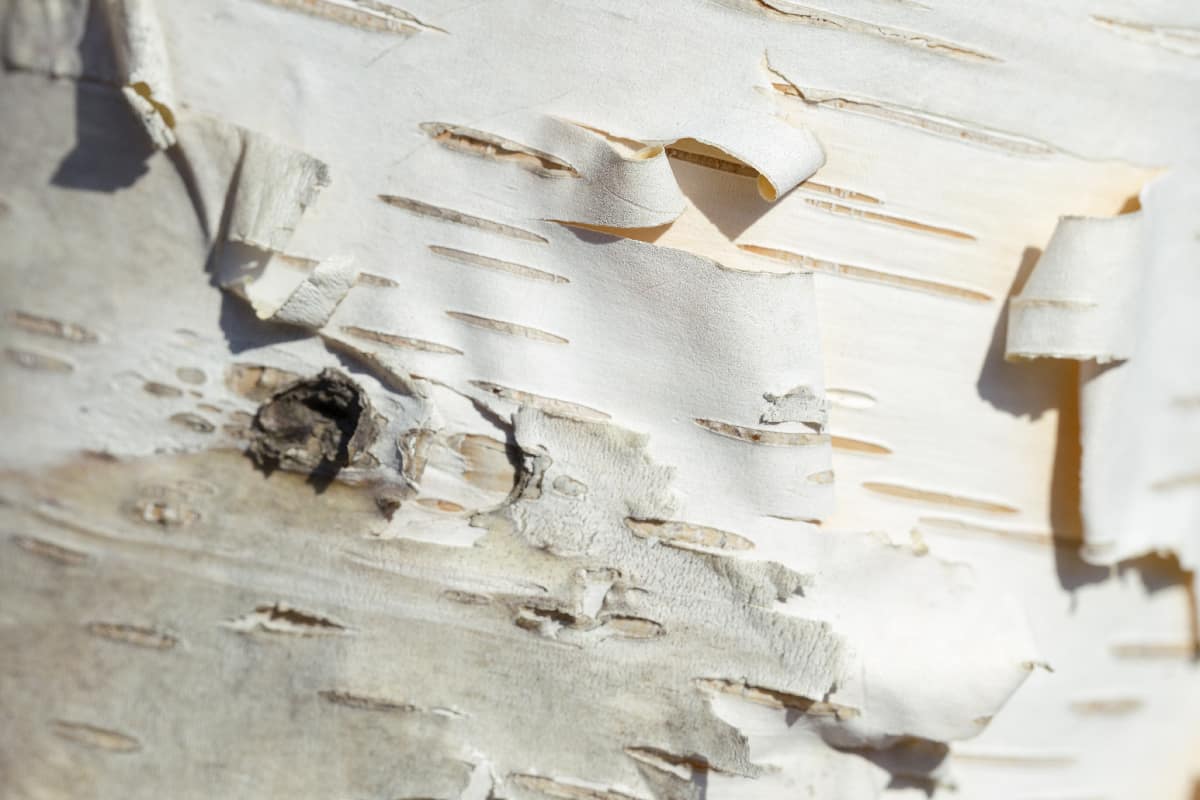The mystery behind the unique bark of a birch tree has often been a subject of discussion and debate among tree scientists and nature lovers alike. You may be wondering what causes the bark of paper birch to peel. We have thoroughly reviewed the available information and have some answers.
Those familiar with the lifecycle and the preferred climate of paper birch trees have a few main theories on what might be the reason behind a paper birch's peeling bark.
- Peeling bark allows birch trees to thrive in cold climates
- Paper birch bark sheds due to rapid growth
- Shedding the bark may promote disease and pest resistance
- Paper birch bark peels from moisture differences in bark layers
- Exfoliation is a natural step in all lifecycles
While experts don't seem to hold to one common idea on what causes some trees to peel, these are some of the best theories on peeling bark. Keep reading as we break down each idea. We'll discuss how the characteristics of the paper birch can cause it to peel and how peeling bark is a benefit to the tree.
Peeling Bark Allows Birch Trees To Thrive In Cold Climates
Paper birch trees are known to thrive in cooler climates. In contrast, they are a sun-loving species that do not do well in the shade. This contradiction is thought to be resolved through the shedding bark which allows birch trees to photosynthesize or utilize the sun more efficiently.

Birch trees can absorb the sun through their unique thin layers, and when they shed, it allows the sun to get to the more absorbent inner layers. This causes the trees to utilize and store the nutrients from the sun for use even on overcast days.
Paper Birch Bark Sheds Due To Rapid Growth
Another factor that may contribute to the peeling bark is the tree's rapid growth. Birch trees grow on average one and a half feet per year and get their white paper-like bark in as little as four to eight years.
If a tree is slow growing, it will allow time for tree bark to expand, creating grooves and allowing the bark to age.
The rapid growth of the inner bark together with the smooth tough texture of the outer bark will cause the split and peeling in birch trees. This may be especially true in young birch trees, as both rapid growth and peeling occur most prevalently in youth.
Shedding Bark May Promote Disease And Pest Resistance
Birch trees are known to be especially resistant to disease. This may be due in part to how they shed their bark instead of allowing it to continue as part of the tree. Any disease and burrowing pests fall off with the bark. The new bark is resistant to burrowing and provides better protection.
Trees also grow moss and other fungi that may eat away at the life force of the tree. Birch trees seldom keep their bark long enough to encourage moss growth.
Paper Birch Bark Peels From Moisture Difference In Bark Layers
Another opinion about what can cause the peeling is based on how moisture is trapped in the different textures of the bark. If you peel a piece of paper birch bark, you see that it is made up of different thin layers of bark underneath the smooth white outer bark.
The moisture is absorbed at different rates through the different textures, causing expanding and contracting that may cause the bark to loosen and curl away from the tree.
Exfoliation Is A Natural Step In All Lifecycles
The shedding of cells happens in some way in all life forms. It is a natural part of the life cycle of all living things. It enables trees to move from one stage to the next by shedding the old skin.
The trunks would not be able to expand if this tree did not lose its bark. Since the tree is a fast-growing tree, this molting process is more apparent. Everything from humans, animals, and other plants also all have a molting or exfoliation process.
Does Peeling Birch Bark Hurt The Tree?

If you remove birch bark too soon, it will damage the tree and leave it vulnerable. Many experts recommend gathering bark from already fallen trees since the bark will still be useable long after the tree falls.
If you prefer to gather bark off living trees, there are ways to do it safely. If the bark is naturally peeling and has pulled away from the tree, it will not hurt the tree. The best time for harvesting birch tree bark in most areas is in June.
How Do You Take Care Of A Paper Birch Tree?
The care of a paper birch tree is pretty straightforward. They do best in sandy, well-draining soils. Though they can thrive in most zones, they like cool sunny weather. They are not recommended for cultivation in Zone 7.
Don't Plant Paper Birch Trees In The Shade
Ensure the plants have access to sunlight year round. Do not plant them where they may be shaded. Since they mature quickly and have a shorter lifespan, have a plan to remove older trees, as they grow very tall and can fall long distances.
Prune Paper Birch Trees In Dormant Season

Paper birch trees do not usually require much pruning. If you do need to prune your trees, prune only towards the end of summer to the first part of the fall. If you prune when the tree is active or the sap is running, it can cause bleeding and damage the tree.
Use The Best Mulch And Fertilizer For Birch Trees

A good mulch around the base of the birch tree will help it get through the winter. It may be a good idea to test the soil for temperature as well as nutrient content. Overheating the roots can kill the tree. If you test the soil and it's lacking in nutrients a slow, long-lasting fertilizer may be useful.
Use mulch made from organic material such as leave and grass clippings or wood chips. These Amish shavings are all natural and safe for pets.
Click here to see an example of mulch for paper birch trees on Amazon.
Click here to see fertilizer for trees on Amazon.
How Do You Know If A Paper Birch Is Dying?
The peeling bark of a birch tree is natural and does not mean that there is any damage to the tree. There are other signs that your tree needs attention or may be dying.
The top enemies of birch trees may be hot temperatures and borer beetles. If your tree has D-shaped holes in the bark from the insects, look for falling limbs and leaves, especially near the crown.
Birch trees can drop branches easily, and we recommend that you remove them when you see these symptoms to prevent danger from falling branches. This will also prevent beetles from traveling to other trees.
How You Can Use Paper Birch Bark Peels

Paper birch bark has had many uses in the past. It was used in making canoes and living spaces as well as in medicinal applications.
In modern times, its most popular uses involve unique artwork and personalized stationery. Furniture makers and renovators will often use peeled bark to cover furniture seats and tabletops.
Campers and survivalists say that the bark from fallen trees burns readily even when it's wet and is great for starting a fire. Experienced herbalists note that the bark might have healing properties and was often applied to burns and other wounds to promote healing.
Closing Thoughts
Now that you know some reasons that paper birch bark peels, enjoy these beautiful trees! Harvest the bark safely and responsibly. With the proper care, paper birch trees will provide a brilliant aesthetic to your garden year round.
Before you go, be sure to take a look at these other posts:
15 Gorgeous Trees With White Bark [And Where You Can Grow Them]


